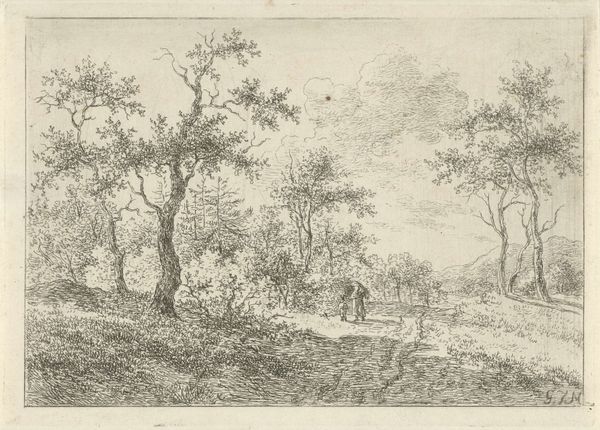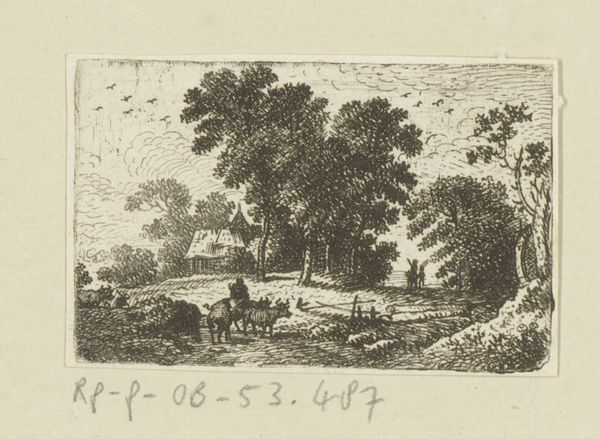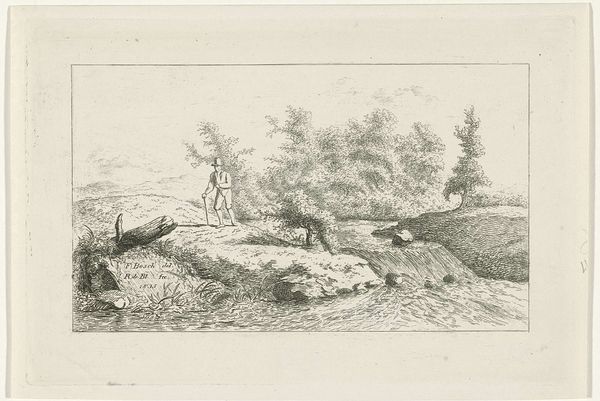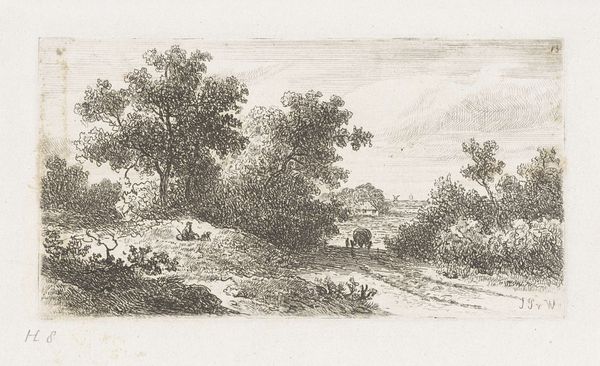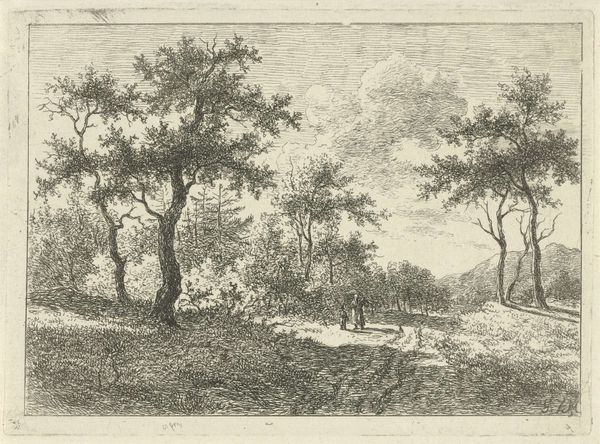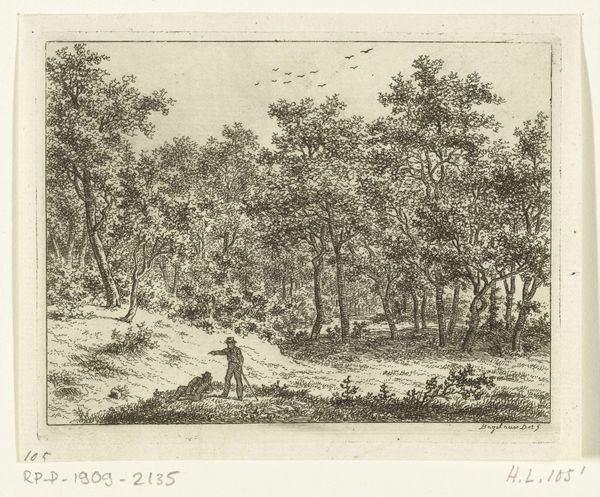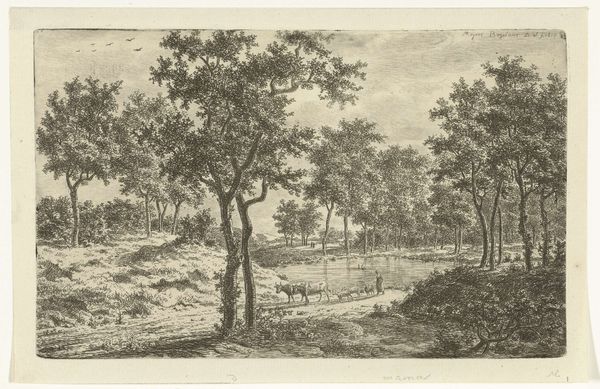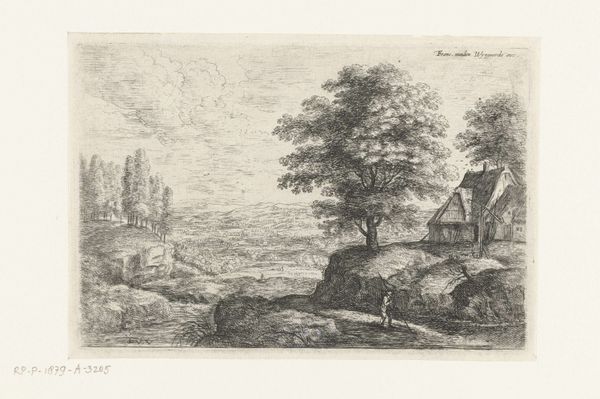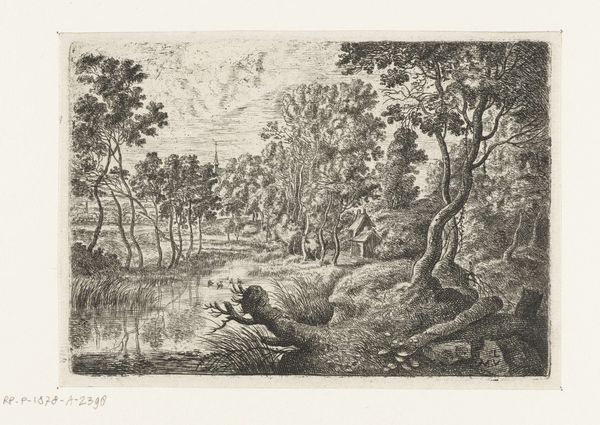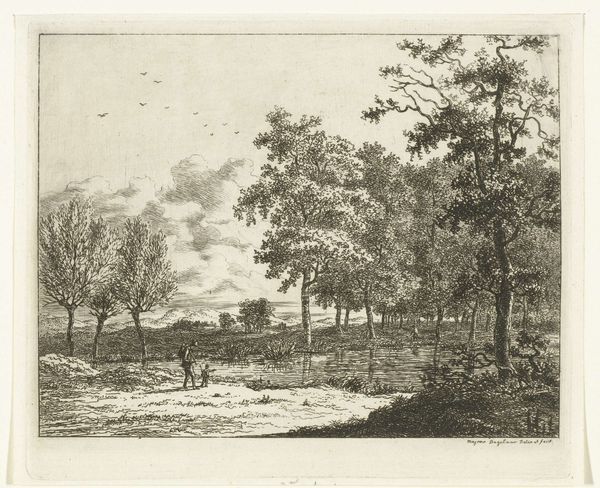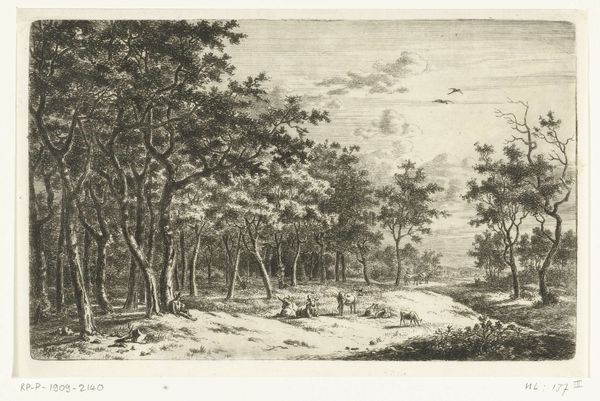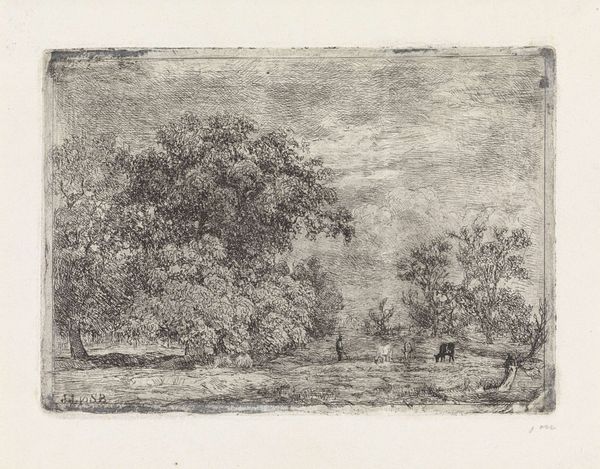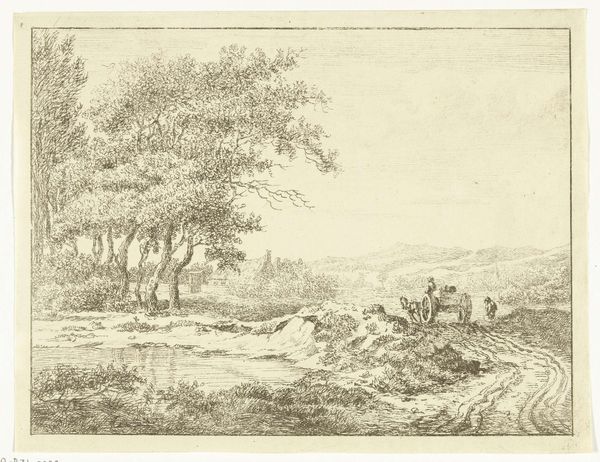
drawing, etching, ink, pencil
#
drawing
#
pen sketch
#
etching
#
pencil sketch
#
landscape
#
etching
#
ink
#
pencil
#
realism
Dimensions: height 37 mm, width 94 mm
Copyright: Rijks Museum: Open Domain
Curator: Welcome. We're standing before Ernst Willem Jan Bagelaar's "Landscape with Two Cows Lying Down." The work dates sometime between 1798 and 1837, and is rendered in ink and pencil, using etching to enhance detail. Editor: The immediate feeling is tranquility. It’s this pastoral scene etched with such a light hand that it almost floats. You know, those cows are just part of the whole; very grounded in their materiality. Curator: Precisely! These pastoral scenes reflected a cultural desire, especially amongst the merchant class, to connect with nature. The cow, a common symbol of domesticity and prosperity, roots us in tangible elements, an idealized Holland. What does it tell us about that historical yearning? Editor: For me, the ink and etching are fascinating because you can see the craft involved, but you are completely separated from nature by the artistic and industrial processes that went into this artwork, all of which takes time. The accessibility of prints allowed broader audiences to consume the image of idyllic country life even amidst urban expansion, highlighting complex ties between materials and consumption. Curator: The choice to depict this scene in monochrome also emphasizes an underlying purity, or at least the *idea* of purity and authenticity. Think of the enduring cultural trope of pastoral life as one far from modernity. Bagelaar isn’t just capturing what's in front of him. He's constructing and presenting a carefully idealized landscape. The boats in the background subtly nod toward commerce, though; that the ideal pastoral life can only be afforded through the mechanisms of the contemporary present. Editor: Right, even what seems like a “natural” or idealized scene can’t escape its material roots, the labour required, even the subtle message about class at play. The paper it’s printed on has its own story; where was that made, by whom, and how accessible would these things have been? Curator: And isn’t that layering what keeps us engaged? It's the quiet drama of symbolic meaning coexisting alongside, yet being shaped by, tangible production and social history. Editor: Agreed. There’s something powerful in that tension.
Comments
No comments
Be the first to comment and join the conversation on the ultimate creative platform.
